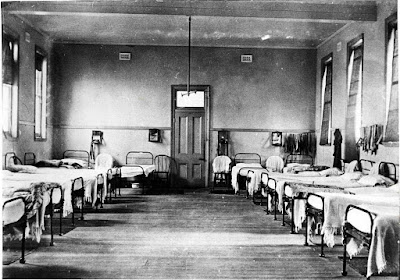In 1840, Port Macquarie’s Archibald Clunes Innes was at the height of his wealth and power with stores, pastoral runs and real estate holdings on the coast and across the New England. Now he faced economic storms of cyclonic proportions.
Opposition to transportation had been rising, driven in part by the growing number of free workers especially in Sydney who saw the convicts as an economic threat, in part by those who believed that continued transportation was incompatible with the development of a free colony.
Aberglasslyn House outside Maitland is an example of the rise and falls associated with the crash of the early 1840s. This monumental Georgian pile designed by architect John Verge for George Hobler, remained unfinished following Hoblers insolvency in the crash.
In face of protests, transportation to NSW was suspended in 1840. Innes had built his wealth in part on access to convict labour to service his growing empire. Now he and other squatters faced labour shortages together with rising wage costs, leading to a search for new workers.
Over the 1820s and 1830s NSW experienced a sustained economic boom.
High wool prices fueled pastoral expansion which in turn inflated stock prices. The previously small European population grew from 7,040 in 1807 to 28,024 in 1820, to over 44,000 in 1830, passing 127,000 in 1847, inflating real estate prices. Land sales inflated Government revenues that were used in part to fund immigration.
Wool prices dropped sharply as did live stock prices, a fall accentuated by the ending of the rapid pastoral expansion that had driven up prices as stock was purchased to stock the new runs. Government revenues from land sales fell sharply, creating a Government financial crisis.
The end result was a rolling series of bankruptcies among those who most exposed to the boom including that of merchant, pastoralist and steamship owner Joseph Grose in 1844. Grose’s spread of interests made him a considerable figure in the early colonial history of Northern NSW’




















